
Player Performance Analysis in Sports Using GPS Trackers and Machine Learning
In this research, data was collected and analyzed from two players in an open age Grassroot football team over a season, spanning eight months (August 2022 – April 2023). For the analysis, two distinct positions of play are selected: Central Midfielder (CM/CDM) and Left-Wing (LW). This is independent data directly collected using the GPS tracking device in line with the ethical demand’s approval. It contains 14 Variables and 50 observations each (Training sessions and Matchday).
Some observed metrics include the Number of Sprints, acceleration, Distance covered, Sprint Distance, Number of High-intensity runs, Time played, Decelerations, Top Speed, and others.
Objective
Using machine learning, deep learning techniques, and data visualization analysis to compare the activity demands, such as the number of high-intensity runs, the amount of high-speed distance, and the distance covered by players in their different playing positions, such as Central Midfielder and Centre Forward. While there are significant positional differences in physical activity demands during competitive matches, the physical activity levels during training sessions do not show positional variations.
As the game of football keeps evolving, not just in how it is played but also in terms of the technology used, that leaves room for minor errors to win games. Performances win games; hence, it is important to evaluate player strengths and weaknesses to evaluate possible outcomes. Often, manual evaluations have left errors and prompted the need to apply an analytical and statistical model to predict performances on previous training and match sessions.
1. Compare Physical Demands
Comparing physical demands in sports through data analysis is invaluable, allowing coaches and athletes to gain deep insights into performance metrics. By harnessing vast datasets and advanced algorithms, this approach identifies patterns, trends, and correlations, enabling precise adjustments to training regimens and game strategies.

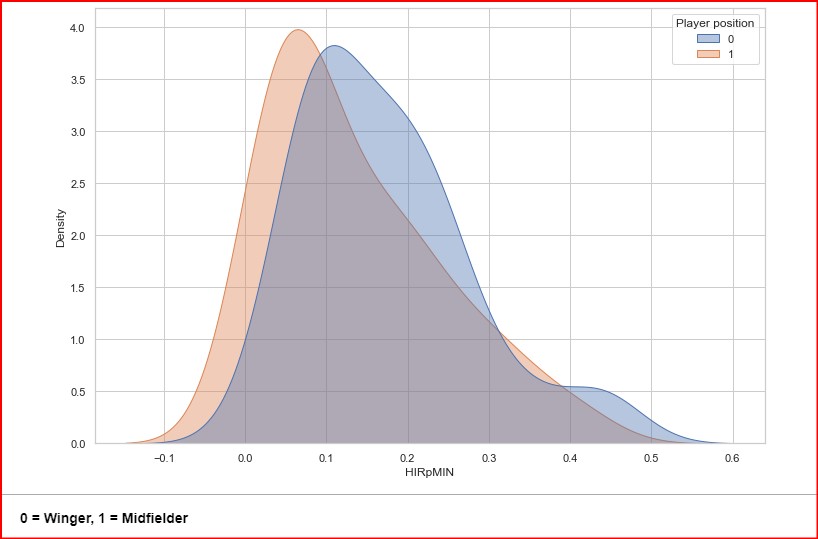
- The results of this study show significant differences in physical demands (High-intensity runs per minute) in match conditions across the varying positions played. The difference in training sessions is not particularly significant because of the varying training drills and conditions.
2. Monitor Performance
The ability to accelerate and decelerate quickly provides real-time insights into a player’s acceleration and deceleration patterns influencing a player’s performance and, ultimately, the team’s success. This has opened up new possibilities for accurately measuring and analyzing these crucial aspects of a football player’s movement.
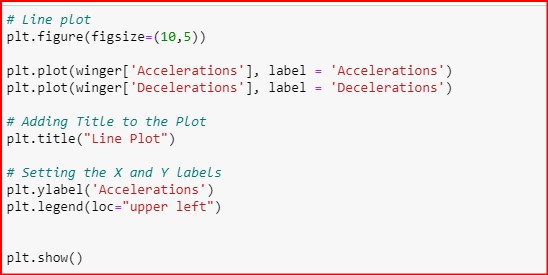
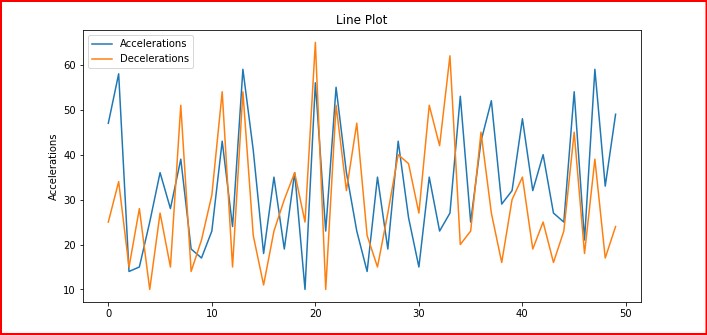
- One of the many benefits of this analysis entails that quick changes in speed, especially abrupt deceleration, can put a strain on a player’s muscles and joints, increasing the risk of injuries. This can help identify players at risk of overexertion or improper technique, allowing coaches to intervene and implement injury prevention strategies.
3. Key Distribution Metrics

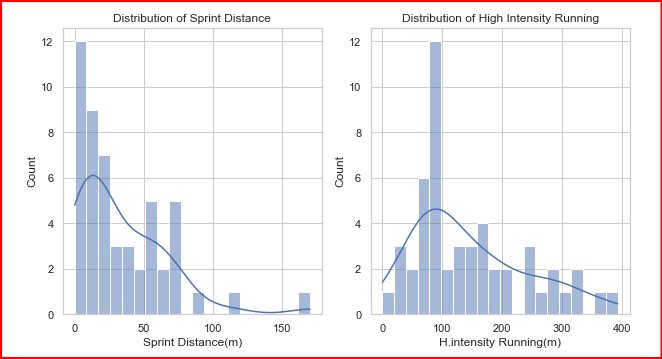
-
The Sprint Distance range from 0 to 175, with the concentration of sprint distance between 0 and 25. A contrast to the winger and a clear indication of sprinting more distances
-
The distribution of High intensity spans to 400m, with most High intensity running with 90 and 100 metres
Other Use Cases:
4. Match Analysis
Python and machine learning have emerged as powerful tools for football analytics, particularly in the realm of match performance analysis. With its versatile libraries and data manipulation capabilities, Python enables analysts and coaches to dissect every facet of a football match, from player movements to tactical strategies.
This enhances the predictive capabilities of football analytics, enabling the identification of patterns, trends, and potential areas for improvement.
As football continues to evolve into a data-driven sport, Python remains an indispensable tool for extracting actionable insights from the vast pool of match performance data, ultimately enhancing team strategies and player development.
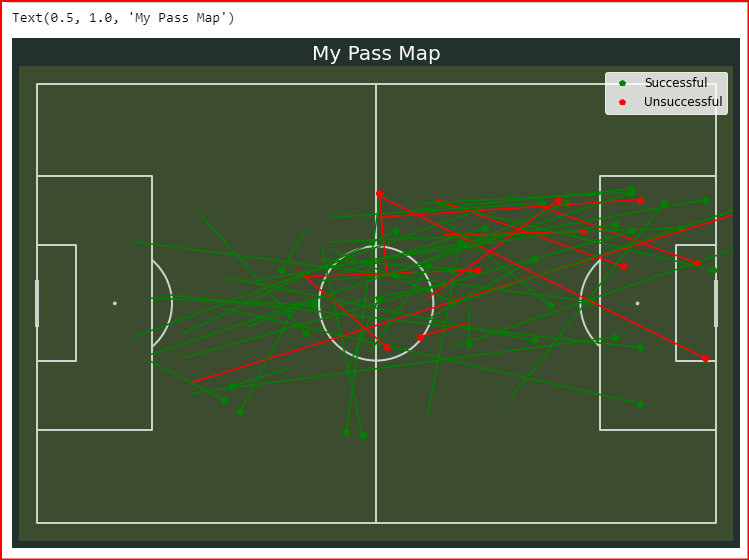
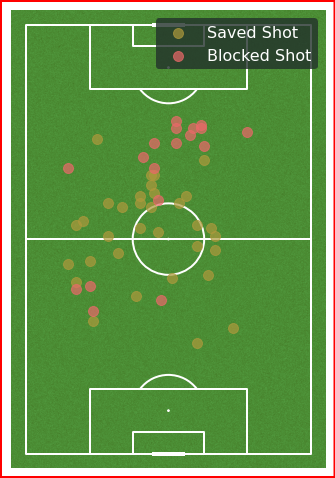
5. Player Development Monitoring
The use of data analytics and video analysis is crucial to the development pathway at clubs because it improves decision-making, eliminates bias, and offers a more objective way to assess a player’s growth. Players at the grassroots level can deliberately concentrate on performance analysis education to provide them the tools they need to further their careers, supported by a distinctive club philosophy and data-driven methodology.
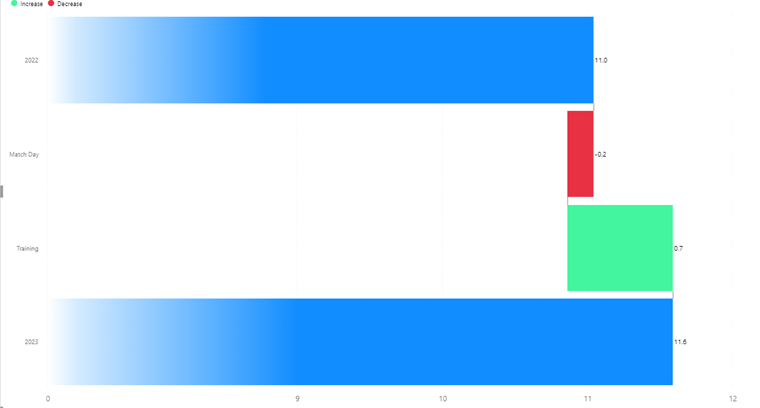
- A match average of 7100m (7.1km) was recorded in the first part of the season but improved to over 7300m (7.3km) in the second part of the season while the training session decreased from 4400m (4.4km) to 3700m (3.7km). Although various factors such as training types might have resulted in this, the match outcomes show a clear improvement, hence informing the player and team on player performance and helping to drive his development.
CONCLUSION
• The trend of technology makes it possible to analyze data on a player’s movements, to identify patterns that indicate a higher risk of injury. For instance, using data analysis or a machine learning model could be trained to identify a player’s risk of injury based on their running style, speed, and in advanced cases the type of tackles they make. Using this information, preventive measures could be applied to aid player management and reduce the risk of injuries.
• For sports coaches and managers, particularly in grassroots football, sports performance prediction and analysis are crucial areas of interest. These categories provide a systematic, data-driven technique for understanding the players’ strengths and weaknesses, identifying areas that need improvement, and making well-informed decisions that maximize the performance of the team. Data Analysis has revolutionized sports performance analysis and prediction, allowing for more accurate and trustworthy data-driven insights.
